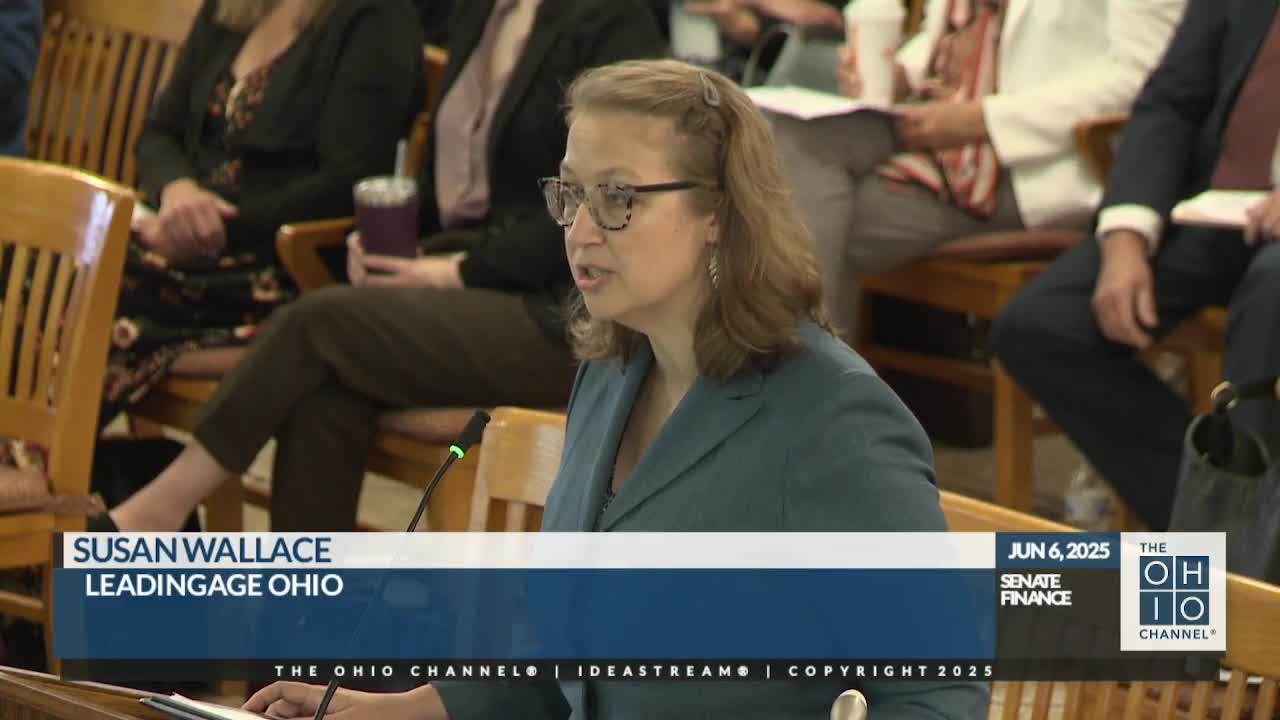Ohio Senate reviews nursing facility reimbursement changes amid technical issues
May 30, 2025 | Finance, Senate, Committees, Legislative, Ohio
This article was created by AI summarizing key points discussed. AI makes mistakes, so for full details and context, please refer to the video of the full meeting. Please report any errors so we can fix them. Report an error »

During a recent Ohio Senate Finance Committee meeting, a critical discussion emerged regarding proposed changes to nursing facility reimbursement rates, which could significantly impact the state's healthcare system. The focus was on a technical fix needed to prevent unintended cuts to nursing homes, estimated at an average of $70 per facility statewide.
The conversation centered around the transition from the Resource Utilization Groups (RUGS) system to the Patient-Driven Payment Model (PDPM), a shift mandated by the federal government. Advocates emphasized that this change is not merely administrative but requires legislative action due to the detailed language in Ohio's revised code governing nursing home reimbursements. The urgency of the matter was underscored by concerns that failing to address this issue could lead to substantial financial losses for providers, with some facing swings of up to half a million dollars.
Key stakeholders, including representatives from LeadingAge Ohio, argued that the proposed amendments are essential to ensure budget neutrality and protect nursing facilities from potential cuts. They highlighted that the Department of Medicaid's current approach lacks the flexibility needed to adapt to the new payment model without legislative intervention.
In addition to nursing home reimbursements, the committee also discussed the PACE (Program of All-Inclusive Care for the Elderly) program, which aims to streamline services for dual-eligible individuals. Proposed amendments would allow PACE providers to begin services before Medicaid eligibility is finalized, addressing delays that can hinder timely care for vulnerable populations.
As the committee navigates these complex issues, the implications of their decisions could resonate throughout Ohio's healthcare landscape, affecting both providers and the individuals they serve. The urgency for action is clear, as stakeholders push for immediate legislative fixes to prevent harm and ensure the sustainability of essential healthcare services.
The conversation centered around the transition from the Resource Utilization Groups (RUGS) system to the Patient-Driven Payment Model (PDPM), a shift mandated by the federal government. Advocates emphasized that this change is not merely administrative but requires legislative action due to the detailed language in Ohio's revised code governing nursing home reimbursements. The urgency of the matter was underscored by concerns that failing to address this issue could lead to substantial financial losses for providers, with some facing swings of up to half a million dollars.
Key stakeholders, including representatives from LeadingAge Ohio, argued that the proposed amendments are essential to ensure budget neutrality and protect nursing facilities from potential cuts. They highlighted that the Department of Medicaid's current approach lacks the flexibility needed to adapt to the new payment model without legislative intervention.
In addition to nursing home reimbursements, the committee also discussed the PACE (Program of All-Inclusive Care for the Elderly) program, which aims to streamline services for dual-eligible individuals. Proposed amendments would allow PACE providers to begin services before Medicaid eligibility is finalized, addressing delays that can hinder timely care for vulnerable populations.
As the committee navigates these complex issues, the implications of their decisions could resonate throughout Ohio's healthcare landscape, affecting both providers and the individuals they serve. The urgency for action is clear, as stakeholders push for immediate legislative fixes to prevent harm and ensure the sustainability of essential healthcare services.
View full meeting
This article is based on a recent meeting—watch the full video and explore the complete transcript for deeper insights into the discussion.
View full meeting
